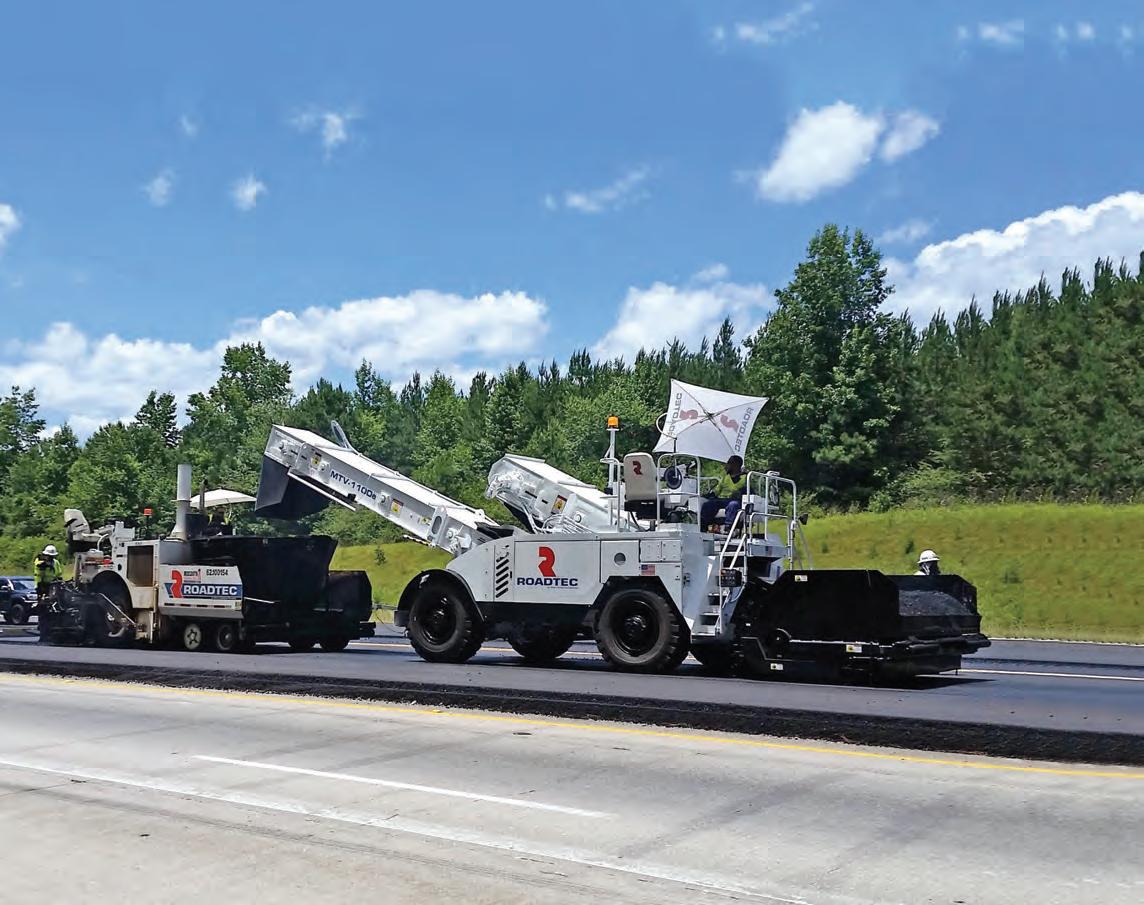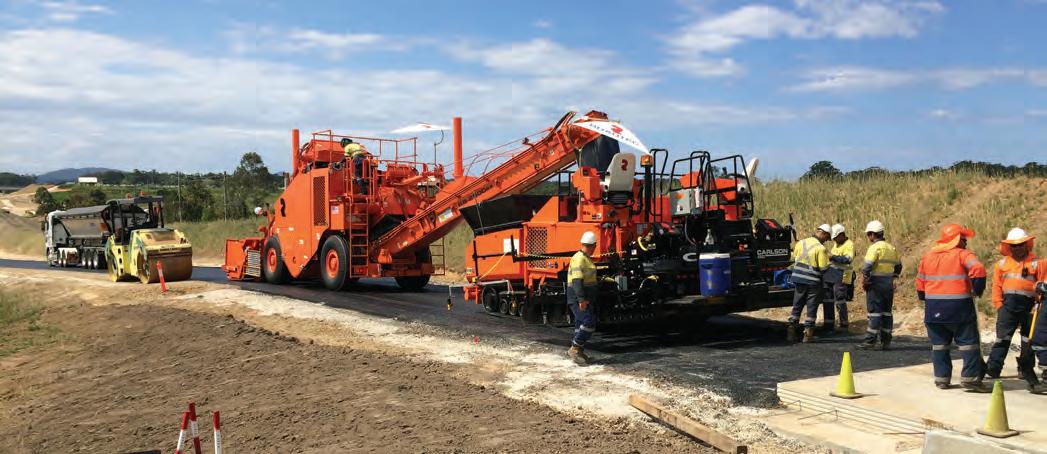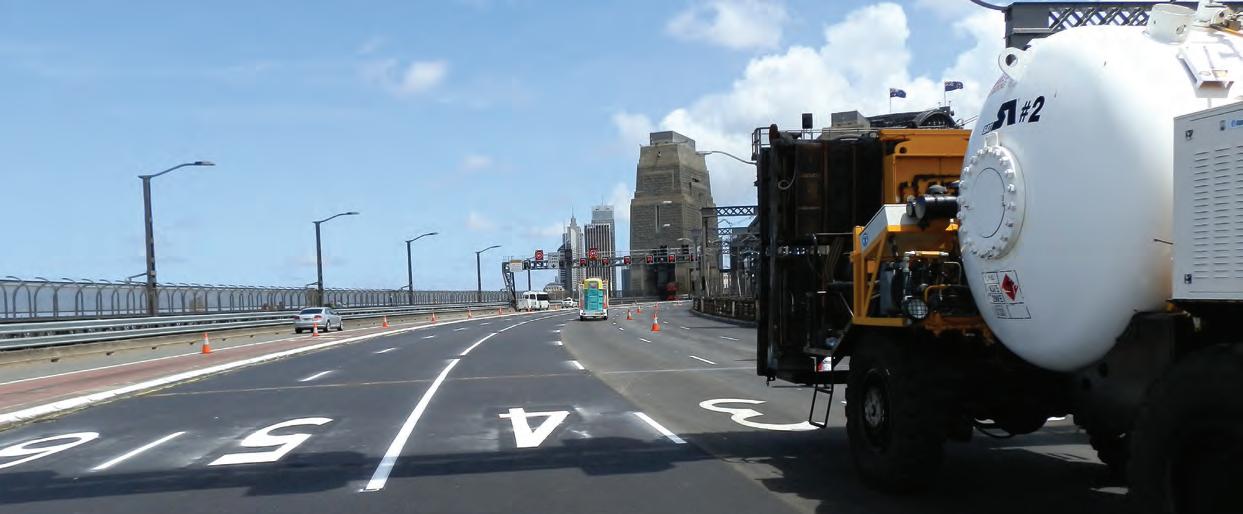
5 minute read
Circular thinking
ON THE ROAD TO A CIRCULAR ECONOMY
AAPA’S EXECUTIVE DIRECTOR FOR WESTERN AND SOUTH AUSTRALIA PETER DAMEN EXPLAINS HOW CHANGES TO THE INTERNATIONAL EXPORT MARKET ARE DRIVING THE ROAD INDUSTRY TOWARDS CIRCULAR ECONOMY PRACTICES.
The circular economy is an economic system aimed at eliminating waste and the continual use of resources. It is based on keeping products, equipment and infrastructure in use for longer.
Circular systems adopt a hierarchy of reduce, reuse, repair, recycle and recover or refurbish to create a closed loop system. This minimises resource inputs and the creation of waste, pollution and carbon emissions.
The circular economy can apply to the roads industry with typical solutions.
The first is reduce. The roads industry can strive to achieve increased durability, quality management and asset life. This can be done through better design, construction quality, reduction of energy, waste and resource usage (for example, warm mix asphalt) and the use of renewable energy (such as solar power).
The industry can also look to repair its pavements by resurfacing, rehabilitating, rejuvenating and restoring road pavements using best practice maintenance techniques.
Recycling is the third solution, with a focus on upcycling. This involves using materials such as crumb rubber that provide performance benefits.
Lastly, recovery can be applied by reprocessing road pavements at the end of life, such as using reclaimed asphalt pavement.
Sustainability is a major focus of the flexible pavements industry, and the Australian Asphalt Pavement Association (AAPA) membership is leading best practice on how roads can contribute.
The association and its members recognise there is an increasing demand for the use of recycled products in roads and are continuing to investigate whether this is the right circular economy answer.
Until recently, Australia exported a substantial amount of waste overseas. In 2016-17, Australia recycled 37 million tonnes of waste, with 746,000 tonnes exported to China.
However, on 1 January 2018, the China
Sword Policy came into effect, resulting in restrictions on the importation of 24 categories of solid waste into China. It further constrained any remaining materials being imported to China to less than 0.5 per cent of contaminants.
During the financial year 2017-18, the quantity of waste exports from China to Australia fell dramatically, but was largely offset by higher exports to other countries, according to Blue Environment’s analysis “Data on exports of Australian wastes”.
Nevertheless, the report highlights that a significant proportion of the overseas waste exports tap could soon be turned off. On 1 March 2019, this move was followed by a complete ban on solid plastic waste to India. Reports indicate several Asian countries are also reviewing their waste import policies.
The Blue Environment report highlighted that if Malaysia, Vietnam and Thailand enacted waste import bans similar to China’s, Australia would need to find sustainable domestic or export markets for around 1.2 million tonnes, or $530 million per annum, based on 2017-18 export amounts.
But despite all this, governments have responded with a collaborative approach across Australia. Most state governments pledged to support local governments and the industry financially, temporarily allowing an increase in stockpiling limits.
In November 2019, at a meeting of environment ministers, the ministers agreed that waste plastic, paper, glass and tyres that have not been processed into valueadded material should be subject to an export ban.
In addition to a host of policy pledges, all ministers committed to identify any procurement opportunities in major road
projects that could use significant amounts of recycled materials.
They determined that the ban should commence on 1 July 2020 for all waste glass, with a phased approach that will see waste plastics, whole baled tyres and mixed paper and cardboard banned by the end of 2022.
How the policy will be enforced remains to be seen, but one thing is certain: this has accelerated the challenge for industry, and the pressure is on to come up with new and innovative solutions.
Roads have been targeted as potential homes for many recycled products, including plastic and glass. However, we need to be careful that we are not turning our roads into waste dumps and, in doing so, reducing their durability and performance, which would be contrary to circular economy outcomes.
When used, recycled materials should enhance the performance of Australia’s most valuable asset – our roads.
Glass, for example, can involve much more energy to transport and reprocess into sand than using available natural materials in a wide radius. However, it can be recycled into glass in perpetuity which provides a quality circular economy outcome.
Crumb rubber and some plastics can also enhance the performance of bituminous products. Therefore, in approaching the challenge, we need to ensure that the numbers stack up and the use of recycled materials does not reduce durability or long-term performance of road pavements but, rather, improve it.
On 11 February 2020, an industry forum was convened on this topic in Perth. The forum brought together close to 100 people from state and local government and industry.
The forum featured six leading experts from around Australia to share the latest thinking on the topic of circular economy from a range of different perspectives. It aimed to help encourage greater uptake of circular economy principles in the flexible pavements industry.
The speakers were from Main Roads Western Australia, the City of Canning, Loop Platform, Tyre Stewardship Australia, Puma Energy and AAPA. It was very clear that industry is doing its part to achieve better outcomes.
Materials such as crushed concrete, fly ash, recycled glass, reclaimed asphalt product, industrial slag and crumbed rubber are already being used routinely.
In fact, the roads industry has many great examples of how it is reducing resource usage, energy and waste, reusing, repairing, and reprocessing at end of life, and recycling waste, much of it from other industries. While their success to date has been good, more can be done, and there was a very strong commitment in the room for that to happen.
PLANT . EQUIPMENT . PARTS . SERVICE & SUPPORT



ASTEC AUSTRALIA PAVING SOLUTIONS
EQUIPMENT TO BUILD AND RESTORE THE WORLD’S INFRASTRUCTURE
An asset solution for every application

Introducing Ctrack Asset, the real-time tracking of assets combined with dynamic reporting. Whether you require tracking outdoors, indoors or underground, Ctrack’s newest solution will keep your assets visible through a range of easily self-installed devices.
With options for a range of vehicles or smaller items such as tools, you can protect your powered and non-powered resources from theft or unauthorised use. Simply set up movement alerts through app, mobile or email notifications. For more information, call us today or visit
ctrack.com/au 1300 304 033










